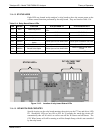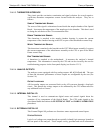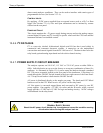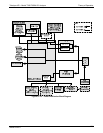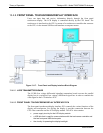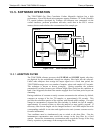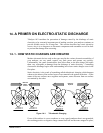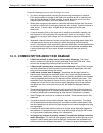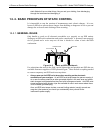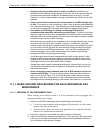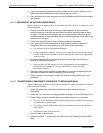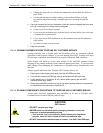
Theory of Operation Teledyne API – Model T300/T300M CO Analyzer
324
13.5.2. CALIBRATION - SLOPE AND OFFSET
Calibration of the analyzer is performed exclusively in software.
During instrument calibration (see Section 9) the user enters expected values for zero
and span via the front panel control buttonand
commands the instrument to make
readings of calibrated sample gases for both levels. The readings taken are adjusted,
linearized, and compared to the expected values. With this information the software
computes values for instrument slope and offset and stores these values in memory for
use in calculating the CO concentration of the sample gas.
The instrument slope and offset values recorded during the last calibration are available
for viewing from the from the front panel (see Section 3.4.3).
13.5.3. MEASUREMENT ALGORITHM
Once the IR photo-detector signal is demodulated into CO MEAS and CO REF by the
sync/demod board and converted to digital data by the motherboard, the T300/T300M
analytical software calculates the ratio between CO MEAS and CO REF. This value is
compared to a look-up table that is used, with interpolation, to linearize the response of
the instrument. The linearized concentration value is combined with calibration slope
and offset values, then normalized for changes in sample gas pressure to produce the
final CO concentration. This is the value that is displayed on the instrument front panel
display and is stored in memory by the analyzer’s DAS system.
13.5.4. TEMPERATURE AND PRESSURE COMPENSATION
Changes in pressure can have a noticeable, effect on the CO concentration calculation.
To account for this, the T300/T300M software includes a feature which allows the
instrument to compensate for the CO calculations based on changes in ambient pressure.
The TPC feature multiplies the analyzer’s CO concentration by a factor which is based
on the difference between the ambient pressure of the sample gas normalized to standard
atmospheric pressure. As ambient pressure increases, the compensated CO
concentration is decreased.
13.5.5. INTERNAL DATA ACQUISITION SYSTEM (DAS)
The DAS is designed to implement predictive diagnostics that stores trending data for
users to anticipate when an instrument will require service. Large amounts of data can
be stored in non-volatile memory and retrieved in plain text format for further
processing with common data analysis programs. The DAS has a consistent user
interface in all Teledyne API analyzers. New data parameters and triggering events can
be added to the instrument as needed.
Depending on the sampling frequency and the number of data parameters the DAS can
store several months of data, which are retained even when the instrument is powered
off or a new firmware is installed. The DAS permits users to access the data through the
instrument’s front panel or the remote interface. The latter can automatically download
stored data for further processing. For information on using the DAS, refer to Section 7.
06864B DCN6314




